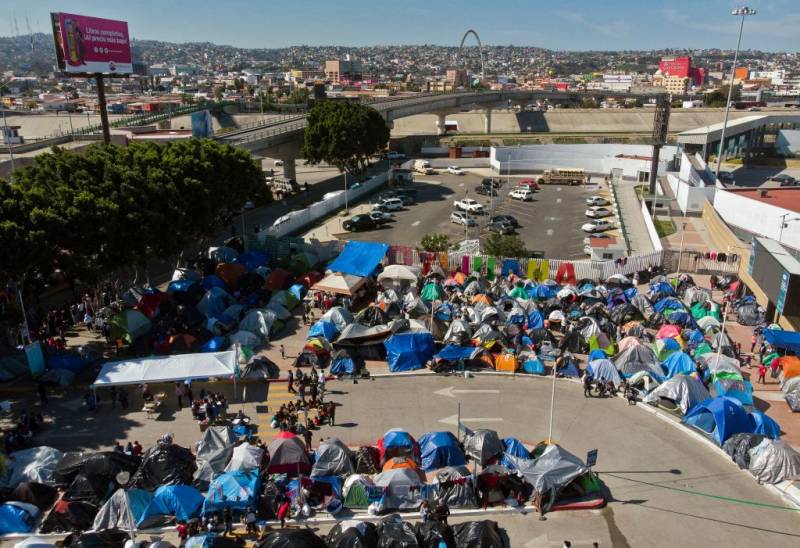The people familiar with the plans saw a draft report that has not been finalized, and spoke to The Associated Press on condition of anonymity.
The limits went into place in March 2020 under the Trump administration as coronavirus cases soared. While officials said at the time that it was a way to keep COVID-19 out of the United States, there always has been criticism that the restrictions were used as an excuse to seal the border to migrants unwanted by then-President Donald Trump.
It was perhaps the broadest of Trump’s actions to restrict crossings and crack down on migrants. The health order has caused migrants to be expelled from the United States more than 1.7 million times since March 2020 without a chance for them to request asylum.
Restrictions took effect over the objections of CDC officials. Dr. Martin Cetron of the Division of Global Migration and Quarantine refused the order, saying there was no public health basis for such a drastic move, the AP reported. But then-Vice President Mike Pence ordered the CDC’s director to use the agency’s emergency powers.
However, as mask mandates were lifted; vaccination rates climbed; and COVID-19 rates dropped among migrants crossing from Mexico, it became increasingly difficult to defend the order on scientific grounds.
Biden, who has rolled back some of Trump’s other, more restrictive policies, has taken increasing criticism for keeping the policy.
Homeland Security officials, Senate Majority Leader Chuck Schumer of New York and other top Democrats were increasingly vocal about wanting to end so-called Title 42 authority, named for a 1944 public health law to prevent communicable disease.
Not all Democratic elected officials agreed, including some from border and swing states. Sens. Mark Kelly and Kyrsten Sinema, both Arizona Democrats, sided with Republican leaders to say Title 42 should remain until U.S. border authorities were prepared for sharp increases in new arrivals.
“The Border Patrol agents told me they expect a tsunami of humans to come across the border, and the Border Patrol has said they will lose control entirely,” said Sen. John Cornyn, R-Texas.
Homeland Security officials said they are planning for as many as 18,000 arrivals daily, an astounding number that they cautioned was given simply to prepare for all possible outcomes, and is not a projection.
But there have been no major changes to how migrants are processed at the U.S.-Mexico border, and there is no increase in holding facilities for them. The immigration court backlog continues to soar, now at more than 1.7 million cases.
Critics say Title 42 has been an excuse to avoid asylum obligations under U.S. law and international treaty, buying Biden time to create the “humane” asylum system that he promised during his 2020 campaign.
“Title 42 is a horrific and unjustified policy that should never have been enacted and has caused grave harm to thousands of asylum-seekers over the past two years," said immigration attorney Lee Gelernt of the American Civil Liberties Union.
While there is no aggregate rate for migrants, COVID-19 test results from several major corridors for illegal border crossings suggest it is well below levels that have triggered concerns among U.S. officials.
In California, 54 of 2,877 migrants tested positive in the first two weeks of March, according to the state Department of Social Services. That’s a rate of just 1.9%, down from a peak of 28.2% on January 8.
In Pima County, Arizona, which includes Tucson, the seven-day positivity rate among migrants didn’t exceed 1.3% in early March. The positivity rate among 5,300 migrants tested last month at the Regional Center for Border Health near Yuma, Arizona, was 0.1%.
McAllen, Texas, the largest city in the busiest corridor for illegal crossings, has a higher rate among migrants — 11.3% for the week ending March 16 — but it has been consistently lower than the general population.
CDC Director Dr. Rochelle Walensky noted falling rates when she ended asylum limits on unaccompanied child migrants on March 11, while keeping them for adults and families with kids. In August, U.S. border authorities began testing children traveling alone in their busiest areas: The positivity rate fell to 6% in the first week of March from a high of nearly 20% in early February.

